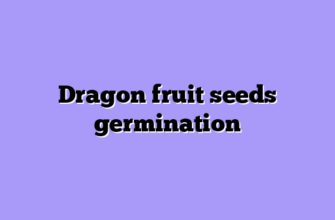Hylocereus “Costa Rican Sunset” has a vivid pink skin and a vibrant purple-reddish pulp. It is exceptionally prolific and yields an abundance of fruit weighing anywhere between half a pound and one pound. Fruit can be consumed raw, like a melon, however chilling it first is recommended. Excellent as an edible garnish to provide brilliant color to any cuisine or in fresh fruit smoothies. Over 15″ wide nocturnal blooms.
Description
Dragonfruit (pitaya, pitahaya etc.) is an interesting cactus native to Central America. The pitahaya can grow and live both in the ground and/or in treetops. There are more than 20 different types.
Costa Rican Sunset dragon fruit can only be found in parts of Costa Rica where there is a clearly defined dry season, such as the entire Guanacaste region and the northern province of Puntarenas.
In its most sophisticated form, one pitahaya plant is capable of generating an immense strain made up of several hundred stems that develop in all directions like a dense tangle and thick. This plant is made up of multiple long, thick stems.
| Growing: | 4 out of 5 |
| Flavor: | 5 out of 5 |
| Fruit production: | 4 out of 5 |
| Size: | 4 out of 5 |
At the start of and throughout the rainy season, its enormous solitary flowers bloom. During the rainy season, each mature stalk can produce up to 10 flowers, which open one by one over the course of 6 or 8 months. Once fully opened, the flower starts to emit a potent, delicious, and penetrating jasmine perfume that can be smelled from up to 100 meters away.
Although this variety requires a cross and is not self-pollinating, it is exceedingly fruitful and requires little pollination. Growth is very wide and self-branching; if not “trained”, it develops into a gigantic bush-like dark mass with broad, flattened stems that are dense and intertwined.
Some people claim that it grows slowly, but once it starts growing in its second and third years, it gains momentum and expands quickly. Pitaya stem segments generate aerial roots that cling to the surface they grow or climb. The stem can grow up to 20 feet (6.1 meters) long.
Planting
There are two ways to plant. The first is to bury a cured cutting in the ground. A cutting is said to be “cured” when the cut portion of the stem has been given time to recover (dry) in the shade.
The second method, which is also highly advised, calls for planting the cured cuttings in pots first, giving them 4-6 months to establish a strong root system, and then planting them in the landscape.

Grow dragon fruit in well-drained soils, in full sun to partial shade. Water this cactus regularly and do not allow the soil to dry out between watering.
By keeping the plant in full sunlight with a fairly warm temperature, the vine will grow from the root. After the root formation, other vines will begin to grow.

Plant care
- Pruning: Because plants can easily become unkempt and top-heavy, pruning is necessary to maintain the shape and size of the plants. Pruning also makes it possible to access the plant, which makes harvesting easier. The cuttings should be disposed of with caution because they could sprout weeds.
- Watering: Regular watering of this cactus is necessary; do not let the soil dry out between applications. Unless there is a lot of rainfall, water new plants well after planting and give them a good soak once a week over the summer (more than 1 inch per week). Established plants can typically survive with less water, but the majority of them thrive when the soil is consistently moist.
The best option is drip line irrigation. Every two weeks, water once, letting the soil dry in between.
- Pests & diseases: There has been some documented damage by mites, thrips, ants, scales and mealybugs, beetles, borers (Diatrea), slugs, and fruit flies. Fruit and plants can also be harmed by raccoons, possums, rodents, and birds. In Florida, severe scale infestations of stems have been documented.
- Pitayas are impacted by several serious diseases. These comprise Dothiorella, anthracnose, and the bacterium Xanthomonas compestris, which results in a severe stem rot. In Florida, newly planted pitaya trees have experienced severe anthracnose damage. The anthracnose also damages the fruits. Plants have also been harmed by Fusarium oxysporum.
- Light and soil requirements: Grow dragon fruit in full sun to medium shade, on well-drained soil. The vine will develop from the root if you keep the plant in direct sunshine at a temperature that is moderately warm. Put the vine in a typical, sizable pot. Use high-quality potting soil, such as a blend of vermiculite, compost, sand, and dirt.
- Location: Full sun with afternoon shade is preferred when picking a location. As long as it drains freely, rich, loose top soil is desirable. Ph needs to be between 6.0 and 7.5 Plant spacing In whichever pattern you choose, plants should be set apart by 8 to 12 inches. Around a pole or other structure, plants frequently form a cluster.
- Constant care: Dragon fruit is simple to cultivate and will cling to virtually anything. Dragon fruit can be grown in containers and carried indoors in climates where it is not winter hardy (Zone 8b and below). The root system is relatively compact.
The fruit
Costa Rican Sunset may have up to four fruiting cycles per year when it is fully productive. For proper cross-pollination, we advise using 2-3 distinct varieties.
One fruit that can grow up to 15 centimeters long, green when young, turning red as it matures, has large triangular green and fleshy scale tips, a more or less thick and fleshy shell, and a soft pulp that is juicy and transparent like grapes. The pulp is covered in numerous small black round seeds that are evenly dispersed throughout the pulp.
Cultivating Tropical Sunsets: My Obsession with Costa Rican Dragon Fruit
People are always asking me what sparked my unlikely career pivot from corporate finance guy to dragon fruit farmer. Well, it all started on a seemingly innocent guy’s trip to Costa Rica several years back. One taste of the tropical ambrosia that is the local Sunset variety and I was hopelessly, irrevocably hooked.
I still remember the moment like it was yesterday. We were ambling through a small outdoor market in the beach town of Tamarindo when the most vibrant hot pink orbs covered in luminous green scales quite literally stopped me dead in my tracks. “What the heck are those things?” I muttered out loud, already reaching to inspect one more closely.
The smiling vendor didn’t speak much English but managed to convey via excessive hand gestures that not only were these spiky alien-esque fruits called “dragon fruit”, they were perfectly edible and considered a renowned local delicacy. With more curiosity than actual confidence, I gathered up a few pounds worth to take back and sample at our rental.
Well, let me tell you – one slice into that bright pink exterior revealed an interior experience that was anything but ordinary. Cradled inside was the most intensely magenta flesh I’d ever seen, speckled with literally thousands of tiny edible black seeds. It looked almost artificially vibrant, like something crafted by imaginative bakers rather than grown in nature.
But then I took a bite…and was instantly transported to a sweet-tart tropical paradise. An explosion of subtly zingy berry notes danced across my taste buds, underscored by delightfully creamy undertones of coconut and cherimoya. Each mouthful was a harmonious balance of luscious and refreshing, creamy and tangy, all at once. I’d quite literally never tasted anything like it.
Needless to say, I became infatuated with the stuff during that trip, shoveling down Sunset dragon fruit at every opportunity like a shameless hoarder. And when it came time to return back to my dreary cubicle life, the thought of never experiencing those flavor fireworks again was utterly unacceptable. So in one of my more characteristically impulsive moves, I quit my corporate gig to instead cultivate the spiky little fruits myself.
Well, let me tell you — if I thought finance was challenging, farming dragon fruit kicked things up about a zillion notches on the difficulty scale! These plants are high-maintenance divas like you wouldn’t believe, requiring precise levels of heat, moisture, humidity and soil makeup to even think about fruiting successfully. Too much heat and the delicate fuschia flowers get blasted into oblivion before they can even open, let alone pollinate. Not enough sun and the whole operation just sulks without developing those signature pink pearls.
Then there’s the truly savage process of actually harvesting the dang things once you’ve managed to coax them from the earth. Those ornamental green scales may look pretty, but they’re covered in nearly microscopic spines that’ll slice your skin apart like you’ve been pricked by a million minuscule needles. It’s full hazmat suit territory unless you want to spend days meticulously removing splinters from every inch of flesh.
Oh, and don’t even get me started on the tedious nightmare of hand-pollinating every last one of those finicky blossoms by hand during their mere 12-hour window of opening. If you miss that comically slim opportunity, you can kiss your dragon fruit dreams goodbye for another cycle. Major anxiety!
Yet despite the endless challenges, headaches, blood (sometimes literal) sweat and tears…I wouldn’t trade this thorny profession for anything. Because one taste of a fresh, perfectly ripe Costa Rican Sunset dragon fruit makes every bit of the madness worth it.
There’s simply no recreating that utterly unique, transporting tropical experience of cutting into one of those brilliant pink spheres with luminous green scales to reveal that vibrantly fuchsia interior loaded with edible seeds. Each juicy, subtly tart bite is an ambrosial balance of zingy berry notes and decadent creaminess like a flavor enlightenment.
As exquisitely as their taste translates into refined desserts, smoothies and exotic cocktails, there’s simply nothing like savoring a Sunset variety all on its own, chilled and unadulterated straight from the fridge. It’s like biting into a frozen rainbow-colored slice of the tropics — pure, refreshing bliss.
So while dragon fruit farming definitely isn’t for the faint of heart, cultivating this particular Costa Rican varietal is an epic feat unto itself. The intense babying required, the war wounds from harvesting, spending hours upon hours hunched over pollinating each individual blossom…it’ll turn your sanity on its head for sure.
But for those few perfect moments when you bite into one of your lovingly-cultivated ruby red spheres and get zapped with the sweet-tart, creamy magic of Sunset dragon fruit? That makes every ounce of the insanity worth it. Sure, the juice is worth the squeeze – but with these tropical jewels, you’ve gotta chase sunsets first.
Conclusion
In conclusion, the Costarican sunset dragon fruit is a delicious and unique fruit that is perfect for any occasion. With its vibrant colors and sweet taste, it is sure to please everyone. So next time you are looking for something new and exciting, be sure to try it!








